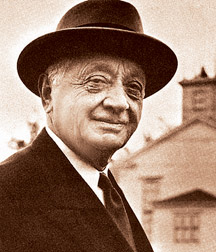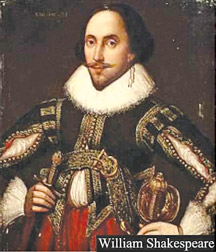|

Pugwash for a Safer World
Nalaka Gunawardene and Vindana Ariyawansa
  Pugwash
Conferences on Science and World Affairs is an international
organisation that brings together scholars and public figures to work
toward reducing the danger of armed conflict and to seek solutions to
global security threats. It was founded in 1957 by physicist Joseph
Rotblat and philosopher Bertrand Russell. Pugwash
Conferences on Science and World Affairs is an international
organisation that brings together scholars and public figures to work
toward reducing the danger of armed conflict and to seek solutions to
global security threats. It was founded in 1957 by physicist Joseph
Rotblat and philosopher Bertrand Russell.
Meeting in private as individuals, rather than as representatives of
any governments or institutions, Pugwash participants exchange views and
explore alternative approaches to arms control and tension reduction.
For over a half a century, Pugwash has provided a neutral platform for
discussing global security issues that have directly involved more than
10,000 participants.
Co-founder Rotblat and the Pugwash Conference were jointly awarded
the Nobel Peace Prize in 1995 for their efforts on nuclear disarmament.
There are national Pugwash groups and loose affiliations of Pugwash
members in approximately 50 countries around the world. The Sri Lanka
Pugwash group was set up in April 1981.
Today’s Wiz Quiz salutes these peace-seekers with a few questions
based on their history.
1. The Pugwash Conferences take their name from the location of the
first meeting, which was held in July 1957 in the village of Pugwash,
the birthplace of the American philanthropist Cyrus Eaton, who conducted
that historic meeting. In which country is the Pugwash village located?
2. The inaugural 1957 meeting of what later became known as the
Pugwash Conferences on Science and World Affairs was attended by 22
eminent scientists from the East and West.
 The
impetus and inspiration for this gathering came from a monumental
statement by 11 top ranking scientists of the time (10 of who were, or
later became, Nobel laureates) which called upon scientists of all
political persuasions to assemble to discuss the threat posed to
civilization by the advent of thermonuclear weapons. The statement was
issued in London on July 9, 1955 by Bertrand Russell in the midst of the
Cold War. What is this document now known as? The
impetus and inspiration for this gathering came from a monumental
statement by 11 top ranking scientists of the time (10 of who were, or
later became, Nobel laureates) which called upon scientists of all
political persuasions to assemble to discuss the threat posed to
civilization by the advent of thermonuclear weapons. The statement was
issued in London on July 9, 1955 by Bertrand Russell in the midst of the
Cold War. What is this document now known as?
3. The current global president of Pugwash Conferences on Science and
World Affairs is an eminent Sri Lankan who has had a distinguished
career as a national and international diplomat, peace-builder and
disarmament expert. He is the eleventh person to hold this position
following in the footsteps of founder Bertrand Russell, Dorothy Hodgkin,
Sir Joseph Rotblat and Dr M S Swaminathan. Who is he?
4. The ‘Doomsday Clock’ is a symbolic clock face that has bee
maintained since 1947 at the University of Chicago to convey “how close
humanity is to catastrophic destruction-the figurative midnight-and
monitors the means humankind could use to obliterate itself”.
Originally, the analogy represented the threat of global nuclear war,
but since 2007 it has also reflected climate-changing technologies and
“new developments in the life sciences and nanotechnology that could
inflict irrevocable harm.” Since the last time it was adjusted, on
January 14, 2010, the Doomsday Clock now stands at six minutes to
midnight. Since its creation, the time on the clock has been changed 19
times. Which technical body determines how many minutes to midnight
based on assessments of global security situation?
 5.
As at October 2011, the Commonwealth of Nations has only two out of its
54 member states that do not have any past constitutional link to the
British Empire or another Commonwealth member (an entry requirement to
the inter-governmental body). The first such country was Mozambique, a
former Portuguese colony, admitted to Commonwealth membership in 1995.
In 2009, another African country became the second Commonwealth member
to be admitted without any such constitutional links. 5.
As at October 2011, the Commonwealth of Nations has only two out of its
54 member states that do not have any past constitutional link to the
British Empire or another Commonwealth member (an entry requirement to
the inter-governmental body). The first such country was Mozambique, a
former Portuguese colony, admitted to Commonwealth membership in 1995.
In 2009, another African country became the second Commonwealth member
to be admitted without any such constitutional links.
It was a Belgian trust territory that had been a German colony until
World War I. Its admission was considered under ‘exceptional
circumstances’ by the Commonwealth Secretariat. What is this country?
6. Scientists believe that an ancient lake hidden beneath West
Antarctica’s ice sheet may reveal vital clues about climate change and
future sea level rises. In October 2011, a British team of scientists
and engineers mounted an expedition to investigate this lake, which is
buried under three kilometres of ice. The ice sheet covering the lake
has trapped the Earth’s geothermal heat, preventing it from freezing.
The team expects to find evidence of viruses, bacteria, single-celled
microorganisms called archea and complex cell organisms called
eukaryotes. What is the name of this underground lake?
 7.
In the 1950s, a senior Lankan journalist invented the term ‘Brown Sahib’
in his column in Ceylon Observer to describe made-over brown
‘Englishmen’ who inherited the mantle of colonialism from the English.
He spoofed them in a book titled The Brown Sahib (1962), and again in a
collection of essays titled Brown Sahib Revisited (1987). In this second
book, the author declared that brown sahibs, memsahibs (the ladies) and
their children were alive and well - much to the detriment of the
governments and public institutions in their care. Who was the
journalist-author? 7.
In the 1950s, a senior Lankan journalist invented the term ‘Brown Sahib’
in his column in Ceylon Observer to describe made-over brown
‘Englishmen’ who inherited the mantle of colonialism from the English.
He spoofed them in a book titled The Brown Sahib (1962), and again in a
collection of essays titled Brown Sahib Revisited (1987). In this second
book, the author declared that brown sahibs, memsahibs (the ladies) and
their children were alive and well - much to the detriment of the
governments and public institutions in their care. Who was the
journalist-author?
8. “My momma always said, ‘Life was like a box of chocolates. You
never know what you’re gonna get.’”. This memorable line is found in
Forrest Gump, a 1994 American comedy-drama film which won a total of six
Academy Awards including Best Picture. It was directed by Robert
Zemeckis, and starred Tom Hanks, Robin Wright and Gary Sinise. The story
was about Forrest Gump, a fictional American simpleton who travels
across the world, meeting historical figures, influencing popular
culture and experiencing firsthand some of the historic events of the
late 20th Century. It was based on the 1986 novel of the same name by
which American author?
9. Actor Brad Pitt and director Jean-Jacques Annaud were banned from
entering China after they made a certain movie 1997 based on the book of
the same name written by Austrian mountaineer Heinrich Harrer on his
experiences in Tibet between 1944 and 1951 during the Second World War,
the interim period, and the Chinese People’s Liberation Army’s invasion
of Tibet in 1950.
What is the name of this film, which the Chinese authorities continue
to detest?
10. As at October 2011, planet Uranus has 27 known natural satellites
or moons. The five main satellites are named as Miranda, Ariel, Umbriel,
Titania and Oberon. The names for these satellites are chosen from
characters from the works of William Shakespeare and which English poet?
 11.
The Wall Street Journal is a highly respected financial and business
newspaper in the United States that was first published on July 8, 1889.
The Dow Jones Industrial Average, an index of the US stock market, was
devised by the newspaper and first published on May 26, 1896, Name the
founder of The Wall Street Journal who also invented the Dow Jones
Industrial Average, as part of his research into market movements. He
developed a series of principles for understanding and analysing market
behavior. 11.
The Wall Street Journal is a highly respected financial and business
newspaper in the United States that was first published on July 8, 1889.
The Dow Jones Industrial Average, an index of the US stock market, was
devised by the newspaper and first published on May 26, 1896, Name the
founder of The Wall Street Journal who also invented the Dow Jones
Industrial Average, as part of his research into market movements. He
developed a series of principles for understanding and analysing market
behavior.
12. In the history of Academy (Oscar) Awards, which were the first
film and its sequel to both win the Best Picture Awards?
13. A new biography of the acclaimed film editor and director Sumitra
Peries was released in August 2011. Titled Sumitra Peries: Sri Lankan
Filmmaker, Poetess of Sinhala Cinema, it traces her career from the time
she was a student in France to becoming a pioneering woman film director
in Sri Lanka and returning to Paris as Sri Lanka’s Ambassador to France
and UNESCO. Who has authored this biography?
14. ‘Chandani: The Daughter of the Elephant Whisperer’ is a German
documentary film released in November 2010. Based and filmed entirely in
Sri Lanka, it tells the real life story of Chandani Renuka Ratnayake,
whose father is the chief mahout at the elephant orphanage in Pinnawela.
When Chandani, 16, wants to become a mahout, her father decides to give
her a chance and gives her responsibility for an elephant calf. But
everyone doubts whether a girl can rise to the challenges involved in
this male-only profession. Who is the German film maker who wrote and
directed the documentary?
15. New Zealand won the Rugby World Cup 2011 after a lapse of 24
years, beating the three-time finalists France 8-7 at Eden Park in
Auckland on October 23, 2011. Which player was named ‘Man of the Match’
at the finals for his stellar performance? He was also named the IRB
(International Rugby Board) International Player of the Year 2011.
Last week’s answers
1. Coolum Beach, a beachside town on the Sunshine Coast in
Queensland, Australia
2. Singapore in 1971
3. Mozambique
4. Germany’s invasion of Poland on 1 Sept 1939, starting Second World
War
5. Sweden
6. María Eva Duarte de Perón, better known as Eva Perón
7. Professor Richard P Binzel
8. Lionel Wendt (1900 - 1944)
9. Monrovia (capital of Liberia), named after fifth US President, James
Monroe
10. Mona Simpson
11. Adam Parore
12. Joseph Louis Barrow (1914 - 1981) better known as Joe Louis
13. Rekava (Line of Destiny), where his editing credit appeared as Titus
de Silva
14. Chandiya
15. Pony |



